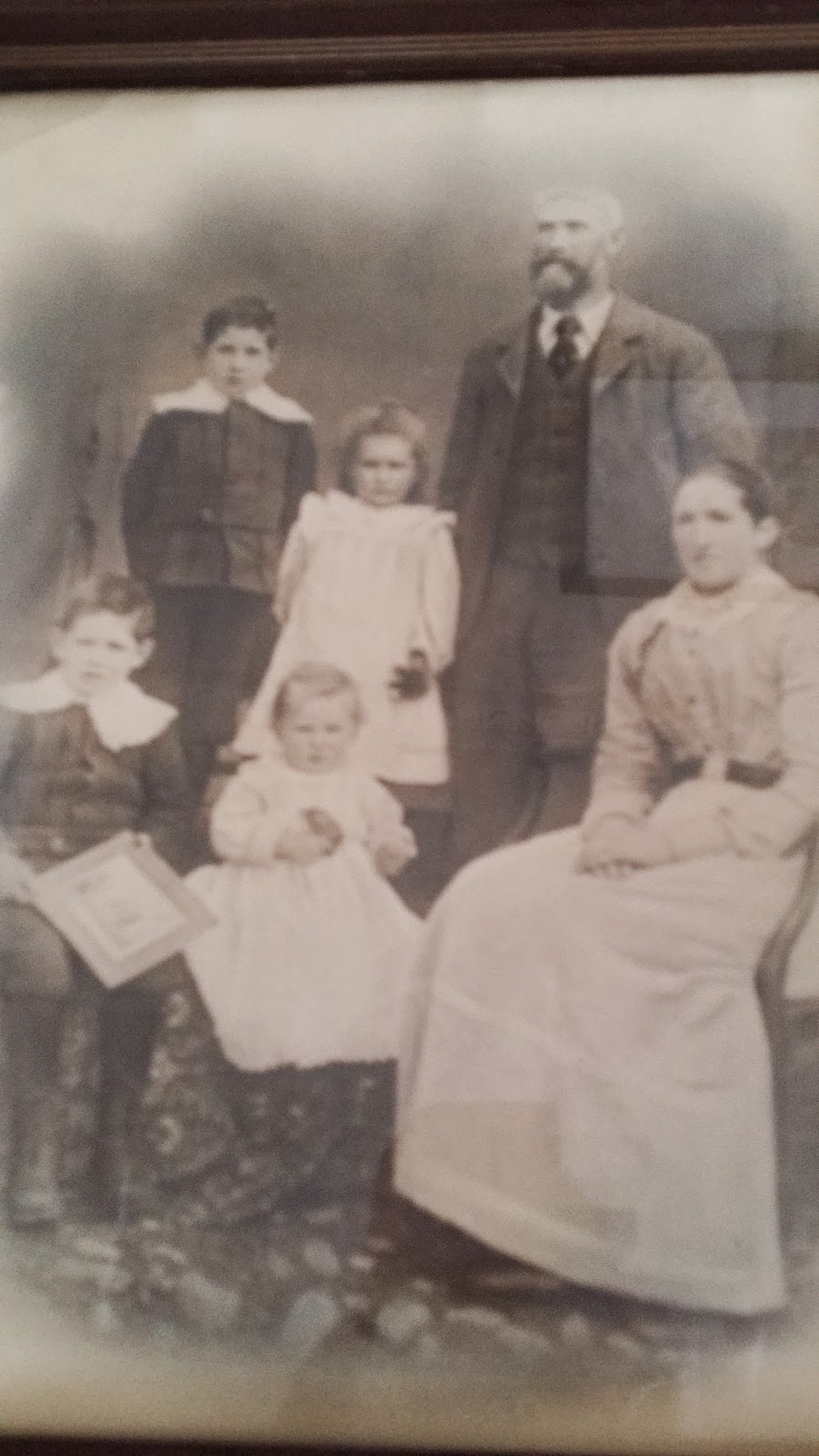I managed to get us onto the ring road, and we headed towards Limerick. But given that it is about 2.5 hours drive, we had to have some diversions. Firstly we went to find Mary's family in Boston. Blink and you will miss it, as Boston is really home to the Boston Manor. The owner of this land owned all the land as far as we could see. Ask a local when in doubt, and you get the answers! More about our Irish ancestors later, as we certainly had some lessons in history today!
 |
| We are parked in the entrance to one of the properties next door to Boston Manor |
 |
| Very peaceful farmland, lot of sheep and high tenstile power lines |
After getting back on the highway we headed towards the general area of Limerick, but our aim was to be in Boris on Ossory, where my grandfather's parents were married. But instead we tried to find the Rock of Dunamase. We thought then it was an old Irish burial ground. But the turnoff we took didn't pass the rock, and eventually we ended up in a small town Stradbally. The information board showed us the direction of Boris on Ossory, as Heidi couldn't find it.
Coffee in the village, and I happened to ask if there were any families named Simpson in the general area. Yes she says go back up the street to the Gala shop run by the Simpsons. So I did, and couldn't believe it when Ann Simpson told me her husband was David Simpson and the family name was from Scotland.
She even took us to her home and showed us a portrait of George Simpson and his family, another bit of my puzzle that I will have to research when I get home. Ann's husband died 14 years ago, and they bought the shop before he died so that she could have a business which allowed her to be home with the children. She certainly has a successful shop given the number of people who visited while we were there.
We then drove to Boris on Ossory. First though, we managed to find the Rock of Dumase. Not quite a rock but a whole abandoned castle on top of a rock!
Boris on Ossory is another almost blink and you will miss it but it had a Church of Ireland, which I presume was were my grandparents were married, cause they weren't Catholic!
I now have a very different perspective on those difficult times. Basically the Catholic were not allowed to own any land, and the lands were owned by the wealthy, who lived in England, and had middlemen looking after their affairs. They charged the farmers rent and allowed them around 1000 sm of land (1/4 acre) on which they had to grow their crops in order to live and to pay rent. Their housing was similar to the crofters cottages in Scotland, and if they failed to pay the absorbently high rents, they were evicted and the landowner removed the shack.
Then came the Potato Famine. For those with Irish ancestors, I would encourage you to look up what is written in Wikipedia about the Potato Famine, and the Poor Law that was in place. The major cause of death in the times of the famine was typhus, from the lice along with all the other diseases that are caused by very poor living standards and no sanitary services.
Our tour guide was very informative, and we came away fascinated. How did they get to Australia, and Canada and the US? There were, at any one time over 250,000 people in the Workhouses. 2,500 died every week, and there were more than 100 workhouses across the country, one in each local area.
The landowners had to contribute to the Poor Tax, and funds from this paid in some cases, for the passage abroad. For others, they had relatives living abroad who sponsored them and, who used to send money back to their Irish relatives, and for some, the Australian government paid the way of unmarried girls so they could be employed as housemaids. If we thought the convicts had it tough, these poor people had it just as bad. The men and women were separated, as were the boys and girls, in fact children as young as 2 lived in the quarters with those up to 15. Just horrible. They were made to work, they had wooden slabs and a bag to sleep on, there was no heating, and when they arrived all their clothing was removed.
So now I know that perhaps my relatives, not being Catholic, might have had it a bit easier, they came because they were sponsored, and that is on their shipping records.
But for Mary's family, thank their lucky stars that they got to come to Australia, because they could have very well have ended up in this situation.
 |
| The bedding for the boys |
 |
| Men's quarters |
































No comments:
Post a Comment